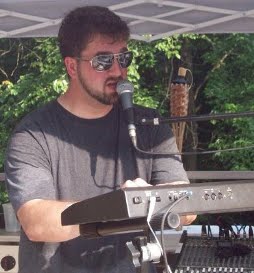This year was extremely busy, which really is a testament to the work we did last year to visit every school and get our name out there. I also am sure that the Tech Tip of the Week videos we sent out every Friday int he Fall had a LOT to do with how busy we were. Each week, after we'd hit send, we'd get 20-40 responses and requests for us to come to people's classrooms and work on the tech.
We were, at times, way too busy to keep up with the requests, but that is what we wanted! We really approached the position int he way we would market a small business... only we wouldn't make more money by how much business we'd generate, we'd just get busier.
We were, at times, way too busy to keep up with the requests, but that is what we wanted! We really approached the position int he way we would market a small business... only we wouldn't make more money by how much business we'd generate, we'd just get busier.
The thinking was that the more excellent work we did, the more likely our district would be to keep the position and expand it to more coaches.
Unfortunately, no matter how much we accomplished, that was not going to happen in next year's budget.
However, we can look back on the last two years and find a LOT to not only make us proud, but to serve as a model for future technology integration coaching endeavors in our district, which really MUST return when the budget conditions improve!
Here are some of THIS YEAR'S accomplishments and highlights:
·
Facilitated 25 Flex Sessions & multiple
in-service / professional development workshops and training sessions. Highlights included planning, organizing, and helping
facilitate eight teacher-led workshop sessions for the Engagement In-service Day in
April.
·
Logged 465 unique individual teachers who
participated in PD / Training / Flex sessions
·
Logged 480 instances of 1:1 tech integration
work for 2011-201. Some highlights include:
a) DVD video of 21
Oak Park 2nd graders making Presidential Speeches
b) End of Year “Move
Up Day” video for Gwyn-Nor assembly
c) Walton Farm’s
Wildcast News – 6 episodes this year
d) 2nd
graders at Montgomery making Animoto videos and Toon Doo projects
e) 12th
grade science dissection Skyped to 6th grade class at Oak Park
f) Pennfield special
ed rubrics turned into Google templates for shared use
g) Facilitated
follow-up sessions for iPad users at Gwennyd Sguare and NPHS
h) co-presented Smart
Board training to 74 teachers, mostly new users, this fall
i) helped 17
teachers use CPS clickers this year
j) helped 5 teachers
get started with Kid Blog
k) helped 15 teachers
use Edmodo with their classes
l) helped 31
teachers with Google Applications such as Docs and Forms
m) did follow-up
training on Schoolwires with 34 teachers
n) helped 16 teachers
improve their use of Outlook email, distribution lists, etc.
o) did follow-up
training on Wikispaces with 44 teachers
p) helped NPHS
Assistant Principal collect & manage data from Senior Survey
q) helped NPHS
Assistant Principal record audio for 4 AP exams
r) designed and
facilitated Geo-caching station for Walton Farm’s Science Day
·
Maintained an informative and effective District Web Page for Academic Integration in 2011-2012.
·
Posted this blog weekly, with 62 posts this
year!
·
Created weekly tech tip video podcasts, with 53
entries over two years.
All things considered, this position was a HUGE success. I know that not only because I have personally worked with more than 900 of the district's roughly 1000 teachers over the past few years, but because of how many of them have approached me this month and told me, "I don't know what we'll do without you next year!"
I know what you'll all do. You'll figure it out. You'll find and rely on your tech savvy students for their expertise. You'll search effectively for training manuals and videos. You will ask your colleagues for assistance. You will (I hope!) continue to check out the resources we've posted on NP Tech Tools. You'll use the skills of our Tech Assistants and library staff.
While I firmly believe in the coaching model, and see great value in having teachers with scheduled time (part or full) to research educational technology, help their peers integrate, plan PD sessions, and train their colleagues, the end goal has always been to train our staff to get by without us! The goal, as we've often joked in our office, was to make our positions obsolete. That didn't quite happen yet, of course. I've been working on projects for teachers every minute of the workday (and most of my evenings at home) for the last month of the school year, so it's safe to say there was still a lot of use for coaches. But the position will not be here next year, and for now, you'll have to figure it out on your own.
So do it. Integrate 21st Century Skills. Create project- and problem-based learning opportunities for your students. Never stop learning.
I know you will do phenomenally well! :)
